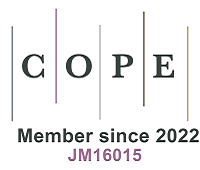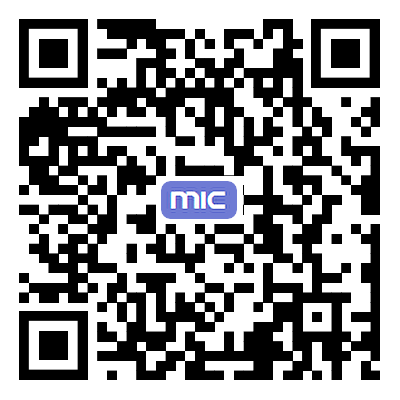REFERENCES
1. Scheffe, J. R.; Haussener, S.; Patzke, G. R. Solar hydrogen production. Energy. Tech. 2022, 10, 2101021.
2. Zou, Z.; Ye, J.; Sayama, K.; Arakawa, H. Direct splitting of water under visible light irradiation with an oxide semiconductor photocatalyst. Nature 2001, 414, 625-7.
3. Voloshchenko, G. N. Production of hydrogen through high-temperature electrolysis of water. Nanotechnol. Russia. 2020, 15, 333-40.
4. Cai, L.; He, T.; Xiang, Y.; Guan, Y. Study on the reaction pathways of steam methane reforming for H2 production. Energy 2020, 207, 118296.
5. Fujishima, A.; Honda, K. Electrochemical photolysis of water at a semiconductor electrode. Nature 1972, 238, 37-8.
6. Ding, C.; Shi, J.; Wang, Z.; Li, C. Photoelectrocatalytic water splitting: significance of cocatalysts, electrolyte, and interfaces. ACS. Catal. 2017, 7, 675-88.
7. Cho, I. S.; Logar, M.; Lee, C. H.; Cai, L.; Prinz, F. B.; Zheng, X. Rapid and controllable flame reduction of TiO2 nanowires for enhanced solar water-splitting. Nano. Lett. 2014, 14, 24-31.
8. Tong, M.; Wang, T.; Lin, S.; et al. Ultra-thin carbon doped TiO2 nanotube arrays for enhanced visible-light photoelectrochemical water splitting. Appl. Surf. Sci. 2023, 623, 156980.
9. Shi, H.; Chen, Y.; Ji, M.; et al. A novel structure Ti/Fe2O3/Cu2S/Co(OH)x enhances the photoelectrochemical water splitting performance of iron oxide. Chem. Synth. 2024, 4, 45.
10. Tan, C.; Cao, X.; Wu, X. J.; et al. Recent advances in ultrathin two-dimensional nanomaterials. Chem. Rev. 2017, 117, 6225-331.
11. Qiu, Y.; Pan, Z.; Chen, H.; et al. Current progress in developing metal oxide nanoarrays-based photoanodes for photoelectrochemical water splitting. Sci. Bull. (Beijing). 2019, 64, 1348-80.
12. Lianos, P. Review of recent trends in photoelectrocatalytic conversion of solar energy to electricity and hydrogen. Appl. Catal. B-Environ. 2017, 210, 235-54.
13. Kment, S.; Riboni, F.; Pausova, S.; et al. Photoanodes based on TiO2 and α-Fe2O3 for solar water splitting - superior role of 1D nanoarchitectures and of combined heterostructures. Chem. Soc. Rev. 2017, 46, 3716-69.
14. Jabbar, Z. H.; Graimed, B. H.; Ammar, S. H.; et al. The latest progress in the design and application of semiconductor photocatalysis systems for degradation of environmental pollutants in wastewater: Mechanism insight and theoretical calculations. Mater. Sci. Semicond. Process. 2024, 173, 108153.
15. Wang, Y.; Huang, Y.; Ho, W.; Zhang, L.; Zou, Z.; Lee, S. Biomolecule-controlled hydrothermal synthesis of C-N-S-tridoped TiO2 nanocrystalline photocatalysts for NO removal under simulated solar light irradiation. J. Hazard. Mater. 2009, 169, 77-87.
16. Vorontsov, A. V.; Smirniotis, P. G. Structure, electronic and optical properties of bilayer anatase nanoribbons. Comput. Mater. Sci. 2018, 155, 266-81.
17. Meena, B.; Subramanyam, P.; Suryakala, D.; Biju, V.; Subrahmanyam, C. Efficient solar water splitting using a CdS quantum dot decorated TiO2/Ag2Se photoanode. Int. J. Hydrog. Energy. 2021, 46, 34079-88.
18. Kaushal, N.; Taha, A. A.; Tyagi, S.; Smirniotis, P. G. NH2-MIL-101(Fe)/N-CNDs as a visible light photocatalyst for degradation of fluoroquinolone antibiotics in water. Mater. Chem. Phys. 2025, 332, 130198.
19. Amal, R.; Belver, C.; Wang, Y. Enriched horizon of applied catalysis b: environment and energy. Appl. Catal. B-. Environ. 2024, 343, 123593.
20. Han, C.; Yan, L.; Zhao, W.; Liu, Z. TiO2/CeO2 core/shell heterojunction nanoarrays for highly efficient photoelectrochemical water splitting. Int. J. Hydrog. Energy. 2017, 42, 12276-83.
21. Guo, Q.; Zhou, C.; Ma, Z.; Yang, X. Fundamentals of TiO2 photocatalysis: concepts, mechanisms, and challenges. Adv. Mater. 2019, 31, e1901997.
22. Abdelkarim, O.; Mirzaei, A.; Selopal, G. S.; et al. Constructing quantum dots sensitized TiO2 nanotube p-n heterojunction for photoelectrochemical hydrogen generation. Chem. Eng. J. 2022, 446, 137312.
23. Sharma, D.; Mehta, B. Nanostructured TiO2 thin films sensitized by CeO2 as an inexpensive photoanode for enhanced photoactivity of water oxidation. J. Alloys. Compd. 2018, 749, 329-35.
24. Yadav, S.; Jaiswar, G. Review on undoped/doped TiO2 nanomaterial; synthesis and photocatalytic and antimicrobial activity: review on undoped/doped TiO2 nanomaterial. J. Chin. Chem. Soc. 2017, 64, 103-16.
25. Huang, J.; Dou, L.; Li, J.; Zhong, J.; Li, M.; Wang, T. Excellent visible light responsive photocatalytic behavior of N-doped TiO2 toward decontamination of organic pollutants. J. Hazard. Mater. 2021, 403, 123857.
26. Dey, S.; Roy, S. C. Influence of Ce doping on morphology, crystallinity and photoelectrochemical charge transfer characteristics of TiO2 nanorod arrays grown on conductive glass substrate. J. Alloys. Compd. 2021, 881, 160481.
27. Jiang, X.; Che; YX; Lu, C. Z. Bio-inspired materials for photocatalytic hydrogen production. Chin. J. Struct. Chem. 2020, 39, 2123-30.
28. Jiang, H.; Li, M.; Liu, J.; Li, X.; Tian, L.; Chen, P. Alkali-free synthesis of a novel heterostructured CeO2-TiO2 nanocomposite with high performance to reduce Cr(VI) under visible light. Ceram. Int. 2018, 44, 2709-17.
29. Lu, H.; Fang, S.; Hu, J.; et al. Fabrication of a TiO2/Fe2O3 core/shell nanostructure by pulse laser deposition toward stable and visible light photoelectrochemical water splitting. ACS. Omega. 2020, 5, 19861-7.
30. Long, D.; Liu, J.; Bai, L.; et al. Continuously selective photocatalytic CO2 fixation via controllable S/Se ratio in a TiO2-MoSxSey dual-excitation heterostructured nanotree. ACS. Photonics. 2020, 7, 3394-400.
31. Cho, I. S.; Chen, Z.; Forman, A. J.; et al. Branched TiO2 nanorods for photoelectrochemical hydrogen production. Nano. Lett. 2011, 11, 4978-84.
32. Cho, I. S.; Lee, C. H.; Feng, Y.; et al. Codoping titanium dioxide nanowires with tungsten and carbon for enhanced photoelectrochemical performance. Nat. Commun. 2013, 4, 1723.
33. Bayan, E.; Lupeiko, T.; Pustovaya, L.; Volkova, M.; Butova, V.; Guda, A. Zn-F co-doped TiO2 nanomaterials: synthesis, structure and photocatalytic activity. J. Alloys. Compd. 2020, 822, 153662.
34. Cao, X.; Wen, P.; Ma, R.; et al. Ni2P nanocrystals modification on Ta:α-Fe2O3 photoanode for efficient photoelectrochemical water splitting: In situ formation and synergistic catalysis of Ni2P@NiOOH cocatalyst. Chem. Eng. J. 2022, 449, 137792.
35. Zhang, K.; Jin, B.; Park, C.; et al. Black phosphorene as a hole extraction layer boosting solar water splitting of oxygen evolution catalysts. Nat. Commun. 2019, 10, 2001.
36. Dotan, H.; Sivula, K.; Grätzel, M.; Rothschild, A.; Warren, S. C. Probing the photoelectrochemical properties of hematite (α-Fe2O3) electrodes using hydrogen peroxide as a hole scavenger. Energy. Environ. Sci. 2011, 4, 958-64.
37. Jia, H.; Shang, H.; He, Y.; et al. Engineering the defect distribution via boron doping in amorphous TiO2 for robust photocatalytic NO removal. Appl. Catal. B-Environ. Energy. 2024, 356, 124239.
38. Ma, J.; Liu, T.; Chen, G.; et al. Tuning the selectivity of photothermal CO2 hydrogenation through photo-induced interaction between Ni nanoparticles and TiO2. Appl. Catal. B-. Environ. 2024, 344, 123600.










